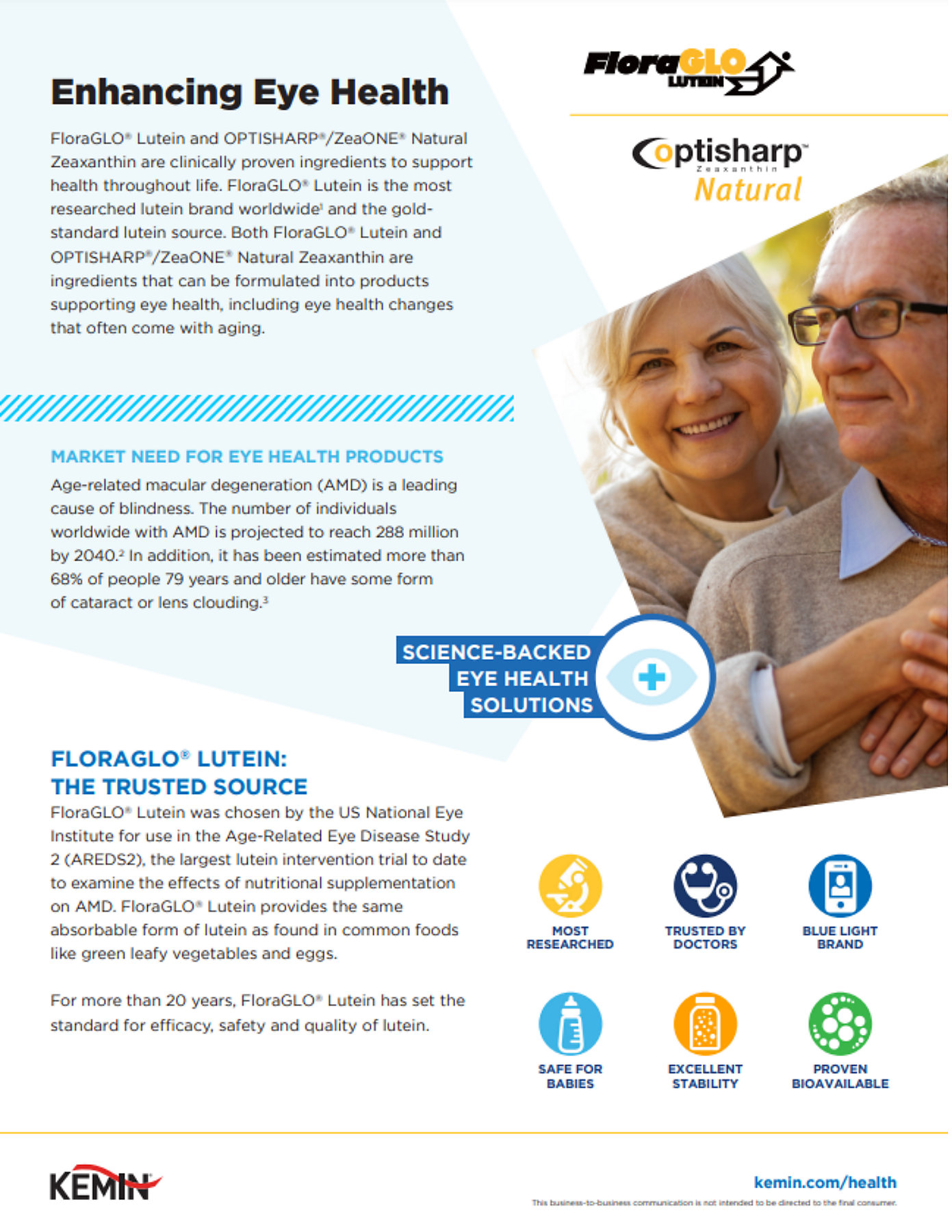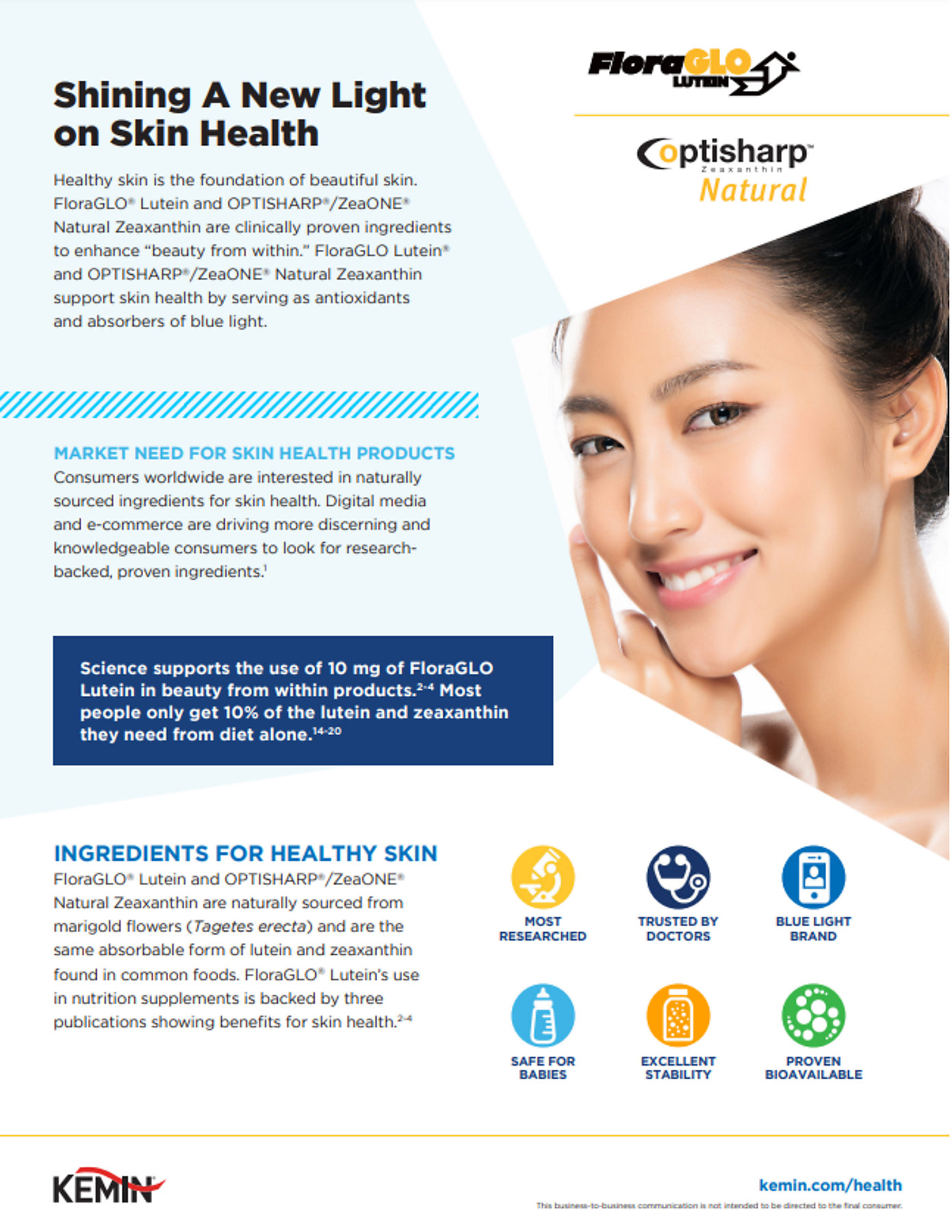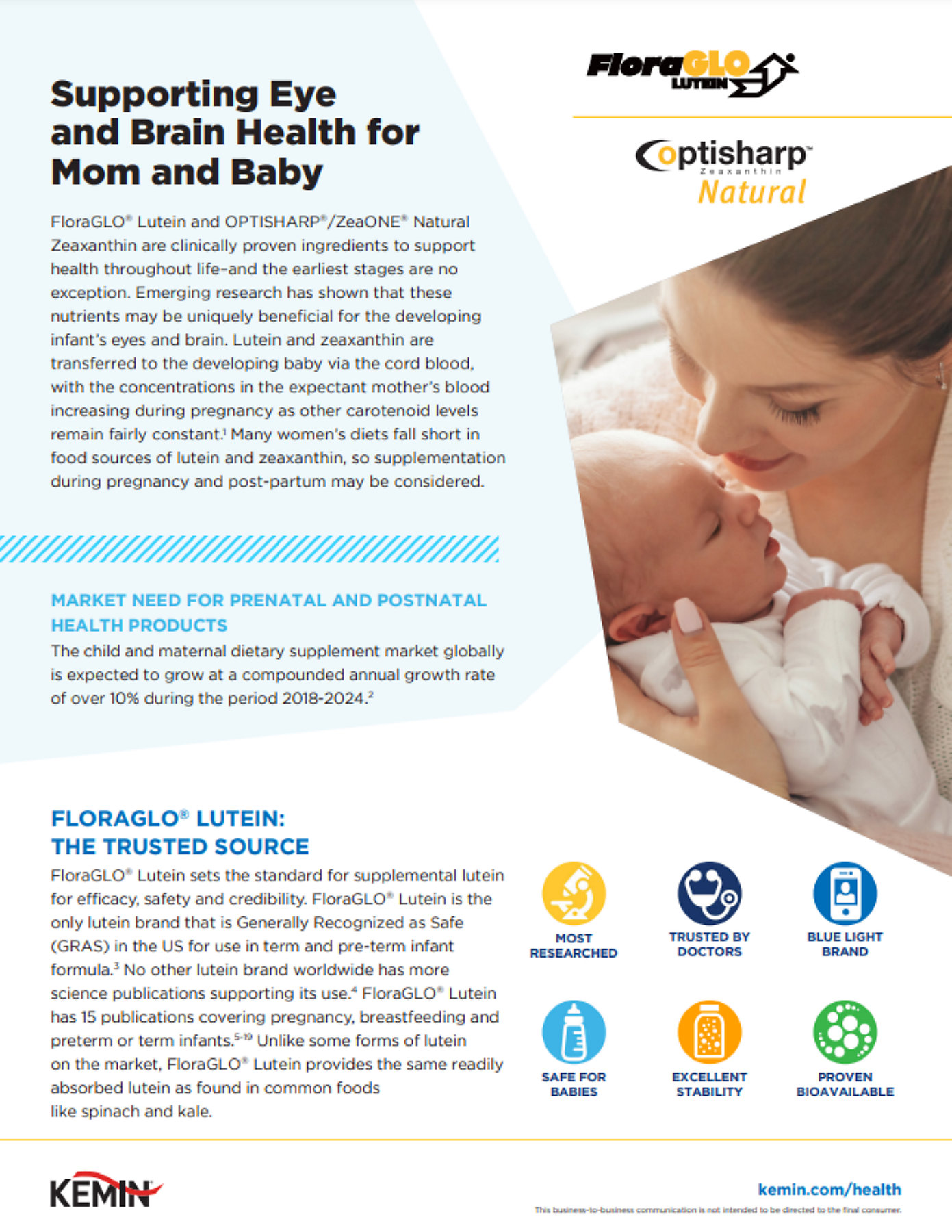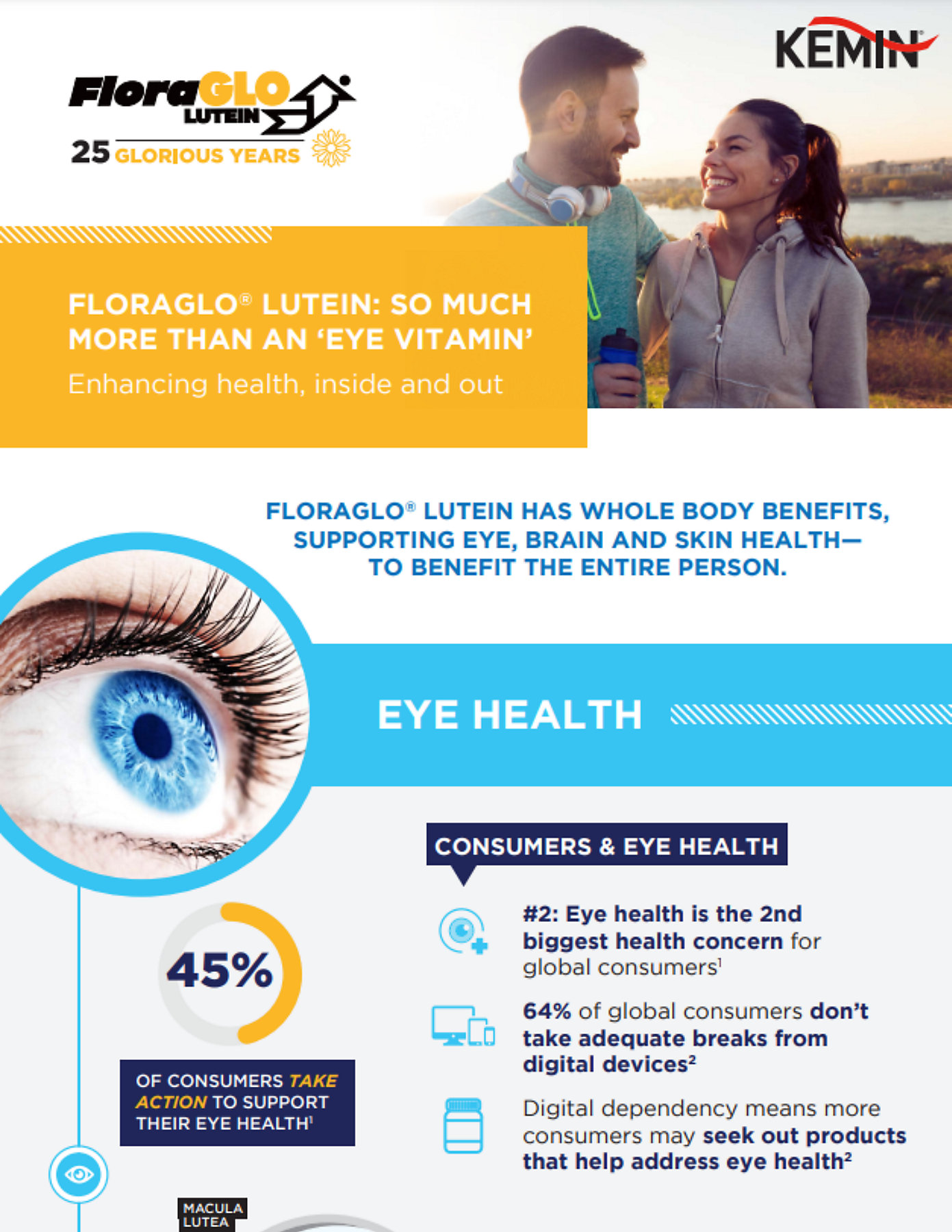At Kemin, we are dedicated to advancing the science behind lutein, particularly through our flagship ingredient, FloraGLO® lutein. Our commitment to promoting children's health, especially regarding eye health and cognitive development, drives our research and product development efforts. Compelled by curiosity, we continuously explore new ways to enhance the well-being of children.
The Role of Lutein in Children's Health
Kemin introduced FloraGLO lutein to the market 27 years ago, and it is now backed by over 116 clinical studies.1 We are currently focusing on the children's health sector, recognizing the importance of lutein in this age group.
Children today are exposed to significant amounts of blue light from screens, making lutein's protective properties for the retina—an extension of the brain—crucial.2
Distinguishing Kemin’s Lutein Offerings
Kemin’s carotenoid portfolio, with FloraGLO lutein at its core, stands out due to its safety, quality, and efficacy. FloraGLO lutein is the only lutein source that is Generally Recognized As Safe (GRAS)3 for use in infant and pre-term infant formulas. This approval underscores the safety and reliability of our ingredient, providing parents with peace of mind.






